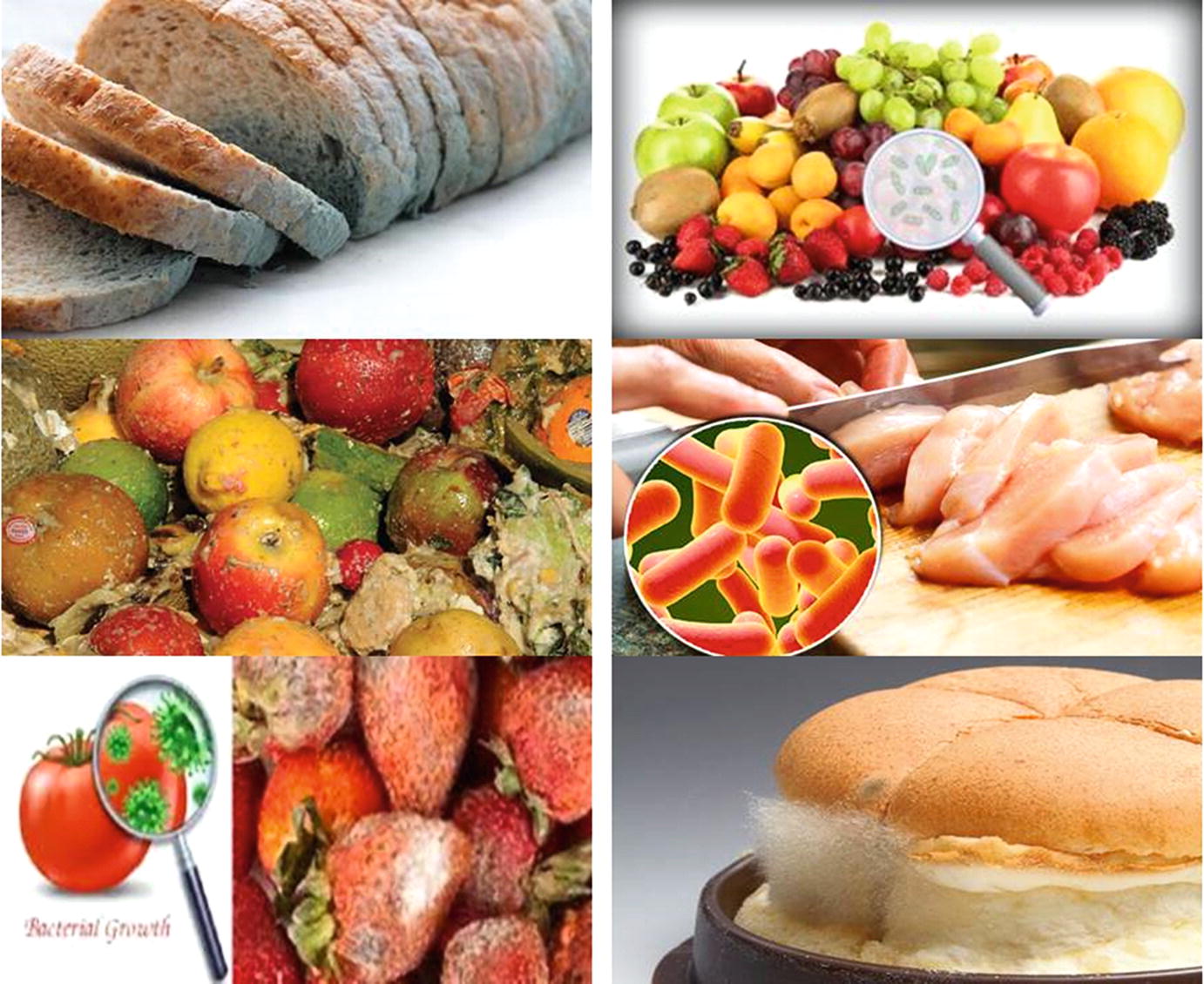We often see that food that has been left out for too long smells bad and looks rotten. But what causes this? What will happen if we eat this food? It is eatable? Let’s find out more about food spoilage.
Introduction
If food is stored for a long period of time and is not stored properly, it will spoil; These foods are bad for your health. When food that has been stored for a long time spoils, germs begin to grow on it. Once food spoils, it cannot be eaten and must be thrown away. Spoilage is a process in which food deteriorates to the point where it is inedible for humans.
Causes of deterioration
Food and water can be infected by germs. Flies carry germs. When they sit on our food, they transmit these germs to our food. There are several factors that are responsible for food spoilage, such as bacteria, mould, yeast, moisture, light, temperature, and chemical reaction.
1. Bacteria
They are the most abundant microorganisms found on earth. They are small in size and vary in shape. Some bacteria are also helpful. They help turn milk into curds.
2. Protozoa
They are unicellular microorganisms that cause diseases such as food poisoning, etc.
3. Mushrooms
They are found in warm, moist places and grow on dead and decaying matter.
4. Temperature
Temperature is one of the main factors responsible for food spoilage.

Signs of food spoilage.
Signs of food spoilage include a different appearance than fresh food, such as a change in colour, a change in texture, an unpleasant odour or taste.
- Activity I
Objective: To study the growth of fungi.
Materials: Piece of bread
Method: Take a piece of bread. Moisten it and store it in a warm corner of the room for 3-4 days. Observe it after 3-4 days.
Observation: Presence of greenish stain growing on the bread.
Food preservation
Food is valuable. Preserving food can help prevent food waste. Food preservation consists of preventing food from spoiling. Food preservation is the process by which food is stored by special methods. Cooked or raw foods can be preserved in different ways to be used later. Some conservation methods are:
1. Freezing
Food stored in a refrigerator stays fresh for a few days. Germs do not grow easily in cool places. We preserve foods, such as fruits with milk, vegetables, and cooked foods, by keeping them in a refrigerator.
- Activity II
Objective: To understand the principle of food preservation.
Materials: Two apples, refrigerator.
Method: Take two apples. Keep one apple in the refrigerator and one outside for 2-3 days. Record your observation.
Remark: The apple inside the fridge is fresh while the one outside will start to rot.
2. Boiling
By this method, we can preserve food for a short period of time. Germs in milk are killed by pasteurization. It is made by sometimes boiling the milk and then rapidly cooling it.
3. Salting
We can add salt to preserve pickles and fish.
4. Sweetening
Excess sugar in food also acts as a preservative. We store food for a long time in the form of jams, jellies and murabba by adding sugar.
5. Dehydration
In this method, food is dried in the sun to stop the growth of bacteria on it. Certain foods, such as raw mangoes, fish, French fries, and potatoes, are preserved using this method.
6. Canning
In this method, the air is removed from the food and it is placed in airtight cans so that germs do not grow on it. Foods like vegetables, seafood, dairy products, etc. are preserved through this method.
Advantages and disadvantages
- Advantages of food preservation: Germs do not grow easily on preserved foods and make them safe to eat. Conservation allows us to enjoy seasonal fruits such as strawberries and mangoes even out of season.
- Disadvantages of food preservation: Excess salt and sugar are used in food preservation, which is not good for health. Some food preservation methods can lead to nutrient loss.

